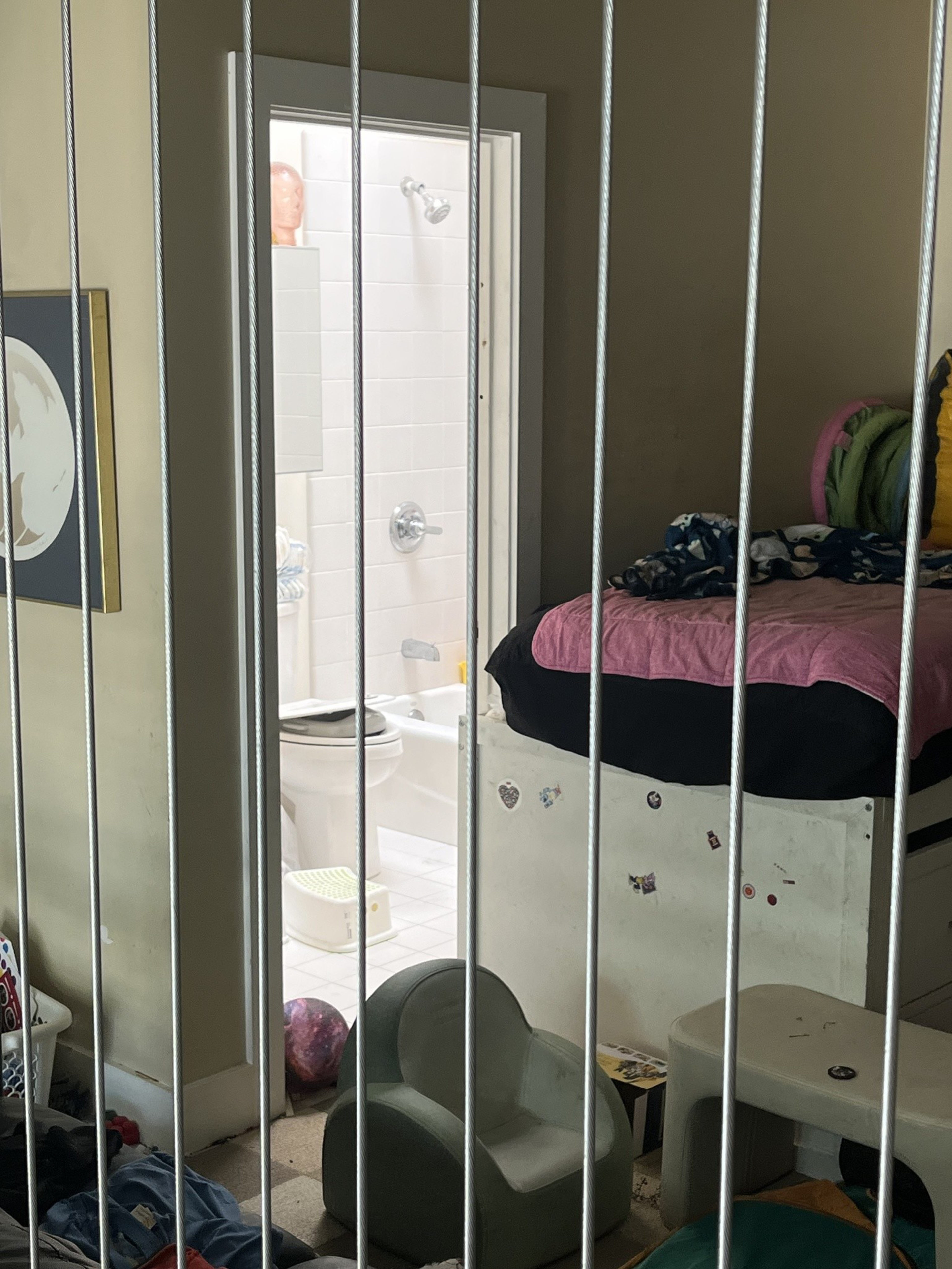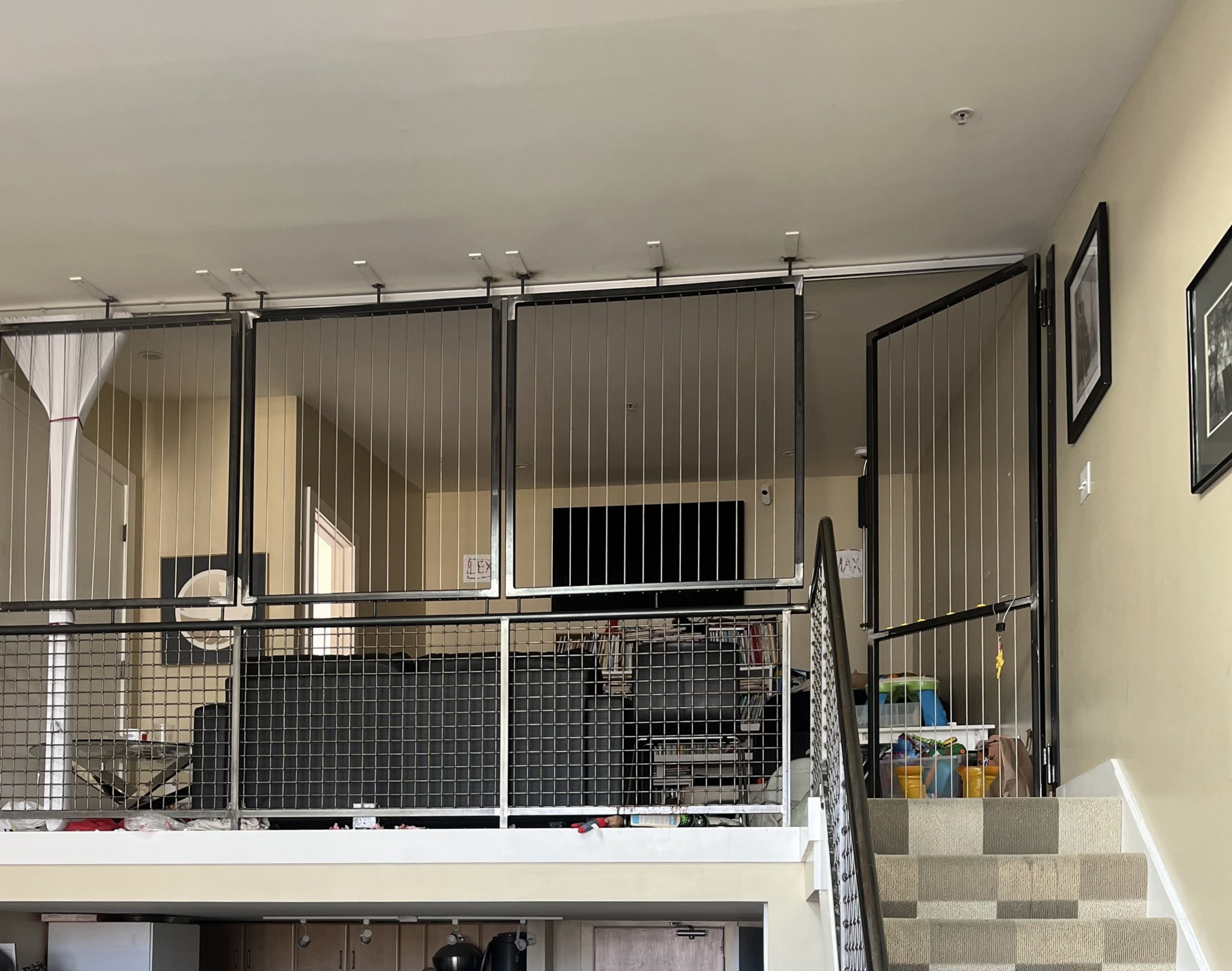The voice on the police scanner was alarmed. It said a Child Protective Services worker had found two children locked in a cage in a SoMa apartment.
“They’re still in a cage, and the [responding party] is unable to open it,” the dispatcher said Aug. 2. “The children do not appear to be injured, but they are in an enclosed, human-size cage.”
San Francisco Police Department officers arrived, and an ambulance took the 6-year-old twin boys to a hospital for a medical check. Afterward, CPS took custody of them, a police spokesperson confirmed.
The Standard visited the apartment building Monday, talked to neighbors, and left a note in the door of the apartment where CPS discovered the twins. A man who identified himself as the twins’ father called later to invite a reporter over.
The Standard has agreed to call the 74-year-old “Raymond” to protect his privacy and that of his children, as he has not been charged with a crime.

At the apartment Monday evening, piles of old mail and packaging covered the dining table. Saltine boxes towered above a wooden kitchen island. Clothing overflowed from a crib. Narrow pathways snaked through the piles, bags of books, cardboard boxes, stacks of paper, toys, and pillows. In a loft, behind floor-to-ceiling metal bars and a metal gate, Cheerios and Starburst wrappers were scattered across the floor. The carpeting on the stairs was stained and dirty. A stale, sweet smell permeated the space.
The loft, which has a bathroom, is enclosed by walls on three sides and by metal bars and a gate on the other. But the twins’ father said it is not a cage, and locking his children in their loft bedroom is a way to keep them safe. One of the twins is neurodivergent and throws furious tantrums, Raymond said. The boy has run out of the apartment, and Raymond said he worries about him being hit by a car.
“To be fair, it does look like a cage,” Raymond said, adding that he spent “tens of thousands of dollars” on the custom gate and bars. He locks the kids in their room only when he’s downstairs in the kitchen, he said, and only for 30 minutes at a time.
“He may blow up, he may melt down, and he can get violent,” Raymond said of the neurodivergent twin. “And that’s when I absolutely need to lock him in the loft, to keep him safe.”
Now his task is to convince CPS he’s fit to maintain custody of his boys.

'It just doesn’t make sense'
Raymond’s apartment could be beautiful. Framed black-and-white art photos line the stairwell to the loft, and cathedral windows frame the downtown skyline. A shelf by the windows displays pastel pink orchids next to a potted banana leaf tree. Until last weekend, the front door was covered with the kids’ drawings, neighbors said.
But years of neglect have taken their toll.
“I just do not have time or energy to keep up with the housekeeping,” Raymond said.
He doesn’t consider himself a hoarder, but the CPS worker who visited disagreed and told him he’d have to clean his house if he wants to get his kids back, Raymond said. A spokesperson for the Human Services Agency, which oversees CPS, said the agency could not comment on specific cases.
A neighbor who asked to remain anonymous said the CPS worker’s discovery of a “human-size cage” was “incredibly surprising.”
“Every time I’ve seen him, he’s been a truly excellent caretaker, and the kids love him,” the neighbor said of Raymond. As for the children, “they seemed happy and healthy every time I saw them, and I pretty much saw them daily.”
Three other neighbors made similar comments.
“It just doesn’t make sense,” one said.
Raymond wanted children for a long time. He retired from his government job in 2007, and about 10 years later, at age 67, decided to try in vitro fertilization with a surrogate. The twins were born in 2019.
“I’m a senior, first-time parent, single parent, to twins, without domestic help,” he said, adding that he does not have relatives in the area. He is not friends with other parents at his kids’ school and does not know any other parents of autistic children to whom he might turn for support.
It can be difficult for people like Raymond to get help. One option is to apply for a city program (opens in new tab) that provides funding for in-home assistance, but it serves mostly seniors and disabled adults, not children. A state program (opens in new tab) serves children, but applications go through the county, and the process can be lengthy. Meanwhile, a San Francisco Unified School District budget shortfall is threatening school services for special needs children.
Carissa Martos, a special education teacher who also works as a direct service provider to families with autistic children, said Raymond’s technique of locking the kids in a room is fairly common.
“There are a lot of people who have to be like, ‘This is their time-out space,’” Martos said. “As long as it’s a quiet space, it can be the best option.”
Even better, Martos said, would be in-home support. But giving a child space to melt down and then cool off afterward is crucial. “A lot of the ways that people have to adapt to care look terrible, even if they are actually best practices,” she said.
Other autism experts have debated the safe room strategy online, with some suggesting parents could lock themselves in a bathroom (opens in new tab) until the meltdown passes. In contrast, others argue that being locked away is traumatic (opens in new tab).
Raymond said his kids are at an emergency foster home in Oakland and are experiencing “intense separation anxiety.” He met with CPS Monday and has a family court hearing this week, where he plans to argue that the twins should be returned to his custody. He said he will tell the court that he has hired a cleaning company and will not lock the gate to the loft.
“I underestimated the work that is involved to raise children,” he said. “But I have no regrets. I love them.”
